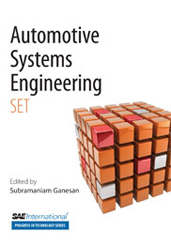Journal Article
A Comparative Benchmark Study of using Different Multi-Objective Optimization Algorithms for Restraint System Design
2014-04-01
2014-01-0564
Vehicle restraint system design is a difficult optimization problem to solve because (1) the nature of the problem is highly nonlinear, non-convex, noisy, and discontinuous; (2) there are large numbers of discrete and continuous design variables; (3) a design has to meet safety performance requirements for multiple crash modes simultaneously, hence there are a large number of design constraints. Based on the above knowledge of the problem, it is understandable why design of experiment (DOE) does not produce a high-percentage of feasible solutions, and it is difficult for response surface methods (RSM) to capture the true landscape of the problem. Furthermore, in order to keep the restraint system more robust, the complexity of restraint system content needs to be minimized in addition to minimizing the relative risk score to achieve New Car Assessment Program (NCAP) 5-star rating.

